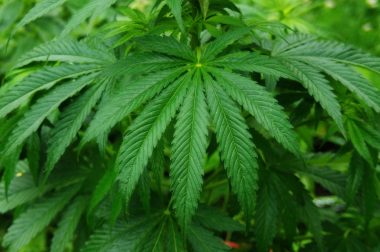
New Report Cites Widespread Improvement in State Marijuana Laws Nationwide
Brett Abrams | Americans for Safe Access
Americans for Safe Access (ASA) released a new report on medical marijuana access in the United States.
WASHINGTON, DC — On Mar 10, Americans for Safe Access (ASA) released their annual report, Medical Marijuana Access in the United States: A Patient-Focused Analysis of the Patchwork of State Laws, in which U.S. states are assigned letter grades based on how well their medical cannabis program meets the needs of patients. Each state is graded according to a rubric of patient’s rights, legal constraints, and overall accessibility to medical cannabis.
The goal for this report is to provide states with recommendations that can benefit their medical cannabis programs and in turn, better provide for patients. The report also provides ways for states to compare themselves to other state programs and look for ways to improve their medical cannabis laws. To help achieve this goal, Americans for Safe Access will ask their members in all fifty states to send the report to their elected officials.
“Medical cannabis laws are moving in a positive direction, but only a handful of the forty four medical cannabis states are truly meeting the needs of patients, and there are still six states where cannabis remains completely illegal for patients. In short, we’re seeing a lot of progress, but the fight is far from over. As of 2017, no state cannabis laws are within the ‘A’ range. Only a small minority of states currently include ASA’s criteria of protections and rights that we believe all patients should be afforded under the law.“
“What we’re experiencing is the byproduct of a movement of doctors, scientists, patients, their families, and policymakers advocating for a patients’ safe access to medical cannabis. Every positive change in a law or regulation is the result of thousands of hours of work by these stakeholders. With 16 states improving their laws and dozens more making improvements through regulations, we are proud to report an overall positive trend for medical cannabis patients across the country.”
States such as Alabama, Georgia, Iowa, Kentucky, Mississippi, Missouri, North Carolina, South Carolina, Oklahoma, Tennessee, Utah, Texas, Wisconsin, and Wyoming are among the lowest ranking, while Arkansas, Florida, Michigan, Montana, Ohio, and Pennsylvania have shown the greatest improvement over 2015 laws. Despite the positive trend, no state falls within the “A” range.
Last year, North Dakota, Florida, Ohio, Pennsylvania, and Arkansas passed new comprehensive medical cannabis laws; Montana and Michigan adopted statewide access licensing program to serve patients; 16 states passed laws to improve existing medical cannabis programs. Several states added chronic pain and PTSD to their list of qualifying conditions and many states added licensing for testing laboratories.
Some states also receive worse grades than in previous years. Maryland and Washington each declined a full letter grade. Maryland, whose comprehensive medical cannabis program was on its way to being one of the best in the nation, has experienced a variety of delays that have left patients without access for several years. While Washington’s decision to merge their state-regulated dispensary system for medical cannabis with adult use has caused limited access for patients to a wide range of medical products.
Many grade improvements were the result of ASA’s 2016 report which included recommendations to enhance state laws and patient access. Over the past year, 23 States followed ASA’s recommendations for improvement. Last year, only 11 States obtained a B or above, however, in this new report, 19 States received a B or above. In the area of patient rights, only eight states obtained grades above 80% in 2016, in the 2017 report, 12 States were above 80%.
Improvements in grades were due to several factors, some of which include:
- Established comprehensive legal protections for patients.
- Improvements in laws to protect parental rights.
- Improvements in civil discrimination protections and denial of access to pediatric patients.
- States with only home cultivation models created dispensary systems.
- Added dispensing locations or lifting the single-dispensary designation requirement allowing for more dispensaries and cultivation sites to help patient access.
- Lowering prices and offering a greater variety of products.
- Statutory language was added to authorize independent laboratory testing of medical cannabis.
Medical cannabis patients and elected officials around the country had the following to say about Americans for Safe Access’ State of the State report:
“The ASA state matrix helped us illustrate to legislators how the proposed bills were falling short for patients. It’s a great checklist for advocates and policymakers.” — Christine Stenquist, a Utah medical cannabis patient.
“As the mother of a child with epilepsy, Pennsylvania’s cannabis laws are priceless. Our family can now openly discuss my daughter’s cannabis treatments with medical professionals without fear of law enforcement or child protective services knocking at my door. I am very excited to watch as Pennsylvania’s medical cannabis program is fully implemented. Seeing all the hard work come to fruition as cannabis products come to my state and all patients, including adults, start to benefit from Act 16.” — Dana Ulrich in Pennsylvania.
“Medical Cannabis Access in the US is a great tool for elected officials, The model legislation and regulations take the guess work out of drafting laws that will help patients and the State grades give legislators and regulators a roadmap for improvement.” — Republican State Senator Michael Folmer of Pennsylvania.
Read the report here: safeaccessnow.org/statesreport
This article originally appeared on American Safe Access. To view the article, click here.
